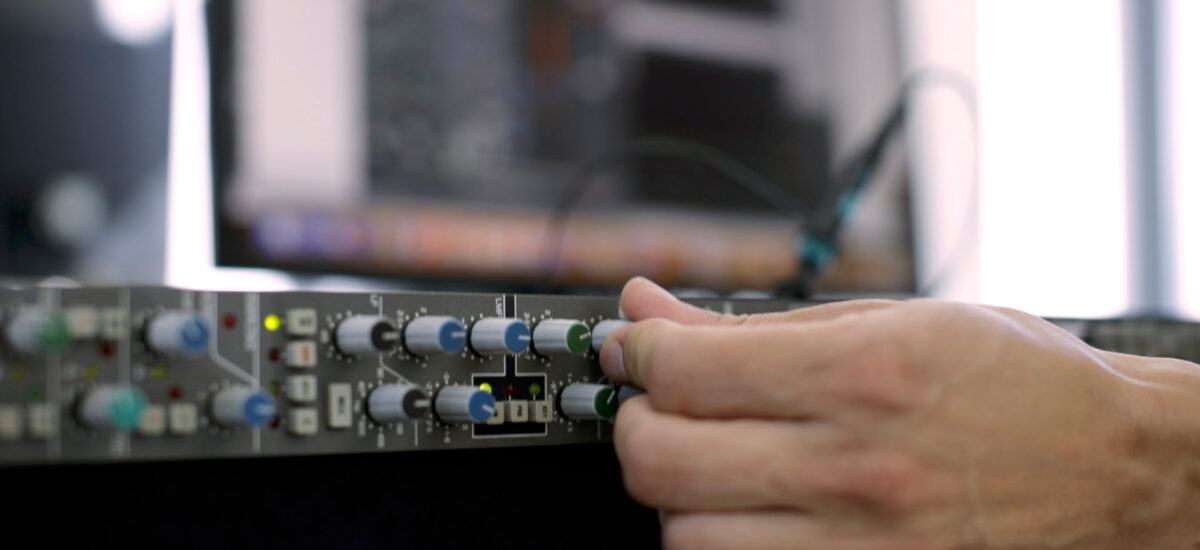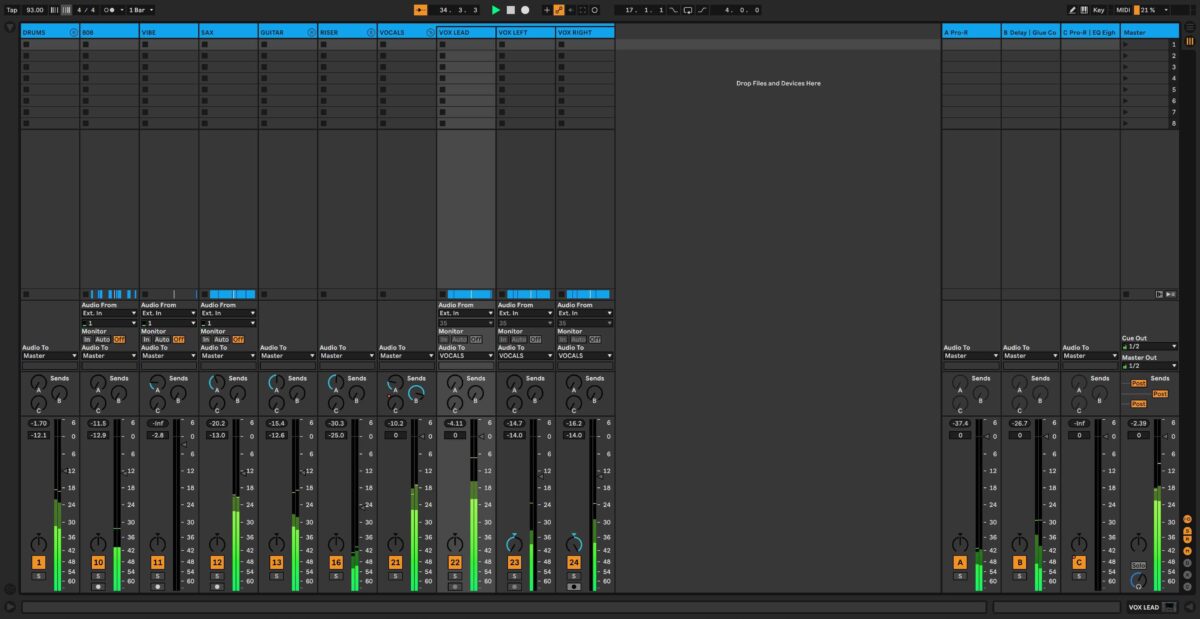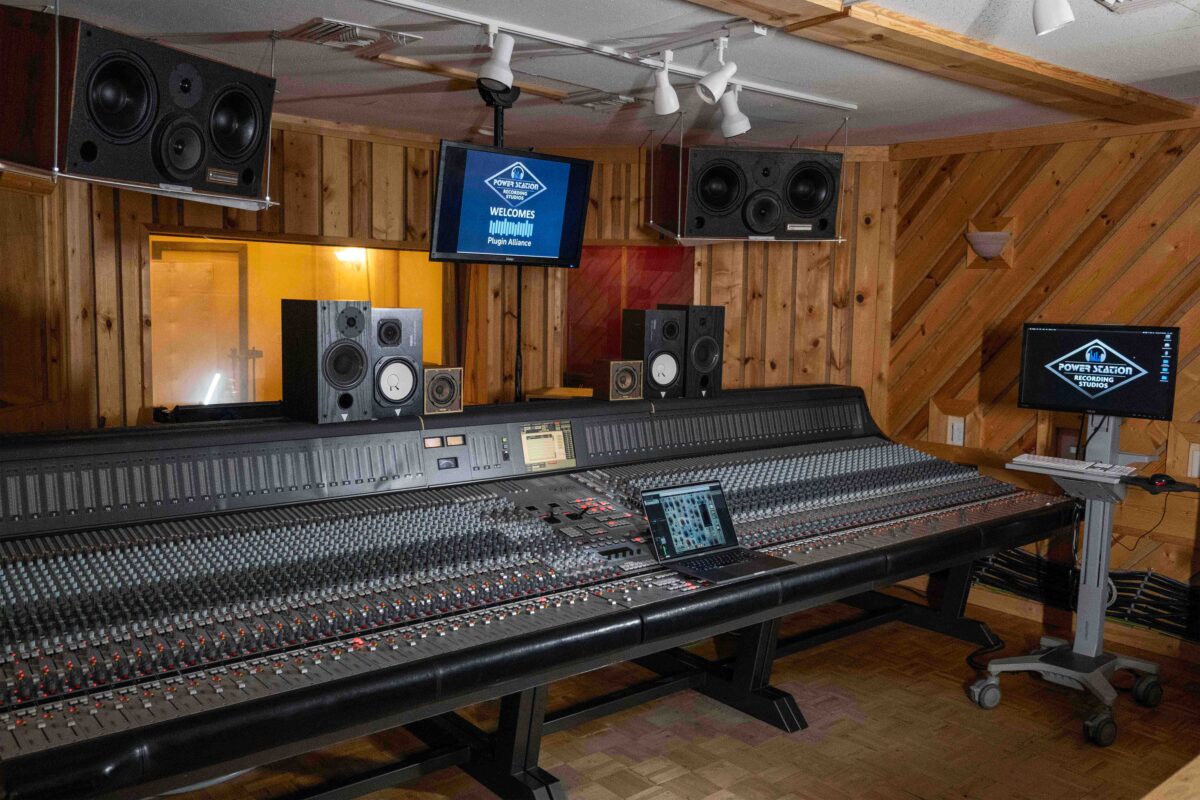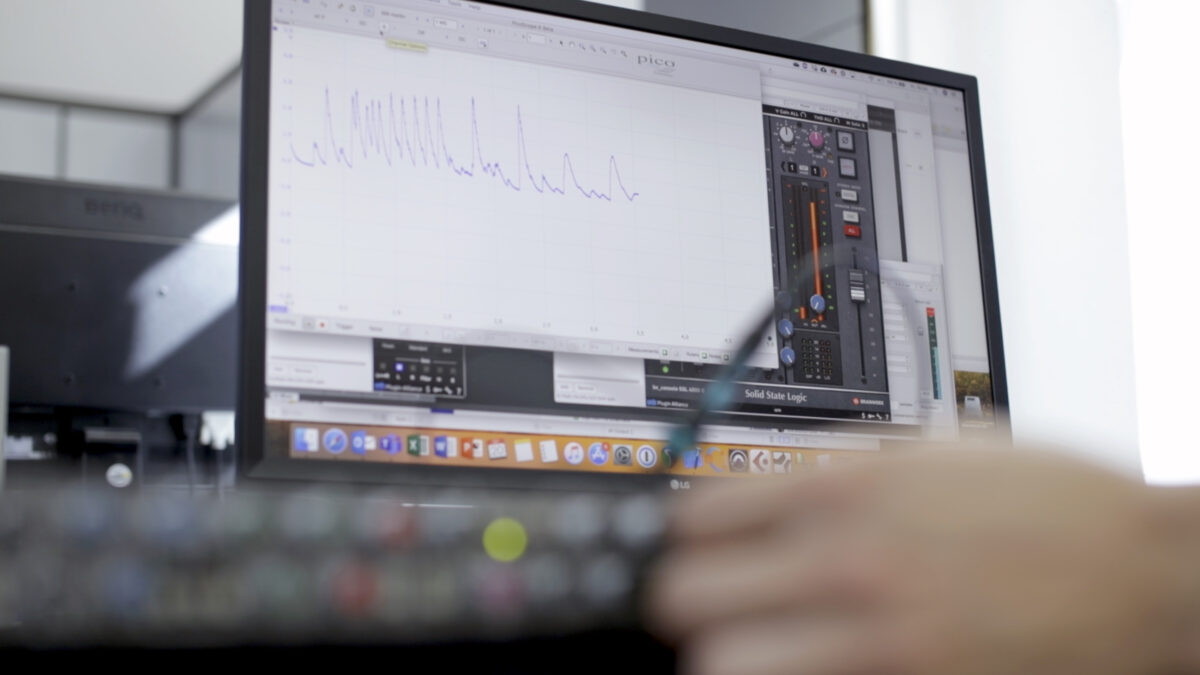
If you’re looking for a more musical and efficient way to mix and master your music, a channel strip plugin could be the perfect solution for you. These types of plugins emulate the sound of legendary mixing consoles from brands like API, Helios, Neve, Rupert Neve, and SSL.
Exploring the world of channel strip plugins is a rewarding venture, whether you’re a professional engineer accustomed to old-school hardware consoles or a bedroom producer aiming to elevate your productions.
In this blog, we’ll look at nine benefits of using a channel strip plugin.
Jump to these sections:
- What is a channel strip plugin?
- 9 benefits of using a channel strip plugin:
Follow along with your own channel strip plugin included in a MEGA Bundle free trial, giving you access to every channel strip plugin offered on Plugin Alliance for 30 days.
What is a channel strip plugin?
A channel strip plugin aims to recreate the sound and workflow of an analog mixing console. Mixing consoles are those giant desks that you see in professional studios with a seemingly endless number of knobs, buttons, and faders. While they may seem complicated at first glance, they’re relatively simple compared to first impressions.
If you know how to use a digital audio workstation (DAW), learning how to use an analog console isn’t much of a stretch. After all, DAWs are based on the design of analog mixing consoles. In your DAW, every element in your mix runs through a dedicated audio channel. You can apply audio effects like compression and EQ, affect pan position, adjust track levels, mute and solo tracks, as well as bus tracks together.

Hardware mixing consoles allow you to apply the exact same processing but with an arguably faster workflow. They contain multiple channel strips that the tracks in your DAW are based upon. A single channel strip may contain a preamp, compressor, gate/expander, EQ, mute button, solo button, gain fader, and various other parameters. These features are often arranged vertically, so you end up with a piece of hardware that looks like a strip of bacon.

On its own, a single channel strip is straightforward to operate. Hardware consoles are huge because you need a separate channel strip for each audio channel. You also require two channel strips for stereo tracks – the left channel gets panned to the left, and the right channel gets panned to the right. When using a 72-channel mixing console, you only need to learn to use one channel strip because all 72 channels will function identically.
A channel strip plugin often aims to emulate a particular hardware mixing console’s workflow, features, and sound. Adding the same channel strip plugin to each track in your DAW provides the experience of mixing with a hardware console. Popular brands with consoles that have been emulated include API, Helios, Neve, Rupert Neve, and SSL.
Channel strip plugins provide many benefits to producers working with a DAW. Some of these include a streamlined workflow, realistic analog sound, and improved CPU efficiency. Keep reading to learn about all the benefits.
1. Streamlined workflow
A channel strip plugin consolidates multiple different forms of processing into a single interface, allowing for more efficient adjustments. Many Plugin Alliance channel strips include filters, a compressor, an expander/gate, an EQ, and various global controls. If you compress a sound and then apply EQ, the EQ changes may call for a revision to your compression settings. Rather than toggling between four or more plugins, you can stick to using one when mixing with a channel strip.
The Brainworx bx_console AMEK 200 is one of Plugin Alliance’s most feature-rich channel strip plugins, suitable for both mixing and mastering. It has a precise and detailed sound that can best be described as a blend between 80s mastering-grade transparency and analog vibe.
Unlike other plugins that require you to navigate through menus and tabs to access different features, Plugin Alliance’s channel strips present the majority of their main features right in front of you, mirroring the user experience of a hardware mixing console. This design approach leads to a tidier and more efficient workspace.
In Ableton and certain other DAWs, you can overwrite default audio and MIDI track settings. This includes the ability to have plugins load onto a track by default. For example, you can save a lot of time by adding the bx_console AMEK 200 to your default tracks. Every time you create a new track, the bx_console AMEK 200 will instantiate automatically. It already contains a majority of your essential mixing and mastering tools, meaning you don’t need to continuously browse through your plugin library.
2. Realistic analog sound
Plugin Alliance’s patented Tolerance Modeling Technology (TMT) bridges the gap between hardware channel strips and plugin channel strips. Every channel of a hardware console contains small variances as a result of component tolerances. The result is that no two channels sound or behave identically, which can lead to a subtly wider mix that sounds more spacious and organic.
Component tolerance refers to the permissible deviation of a component from its specified value. For example, a resistor with a value of 100 ohms and a tolerance of ±5% can have an actual resistance anywhere between 95 ohms and 105 ohms. This variance in resistance can slightly alter the sound quality, frequency response, or noise levels in audio equipment, depending on the resistor’s role in the circuit.

Another example involves the attack and release time of a channel’s compressor. When set to the same values as another channel’s compressor, the attack and release may behave slightly faster or slower as a result of component tolerances. The degree of these differences depends on the component tolerances used within the hardware. Mastering-grade hardware tends to use a component tolerance of around 1-2%, while some mixing hardware may use tolerance values of up to 20%. Hardware with a lower component tolerance tends to be more expensive.
In the past, component tolerances were viewed as an issue that needed to be minimized, but it turns out that subtle differences between channels can sound musical and natural to the human ear. Writing the component tolerances of a single channel into a plugin’s code isn’t enough to clone the experience of working with a hardware console. You need a way to make each instance of the plugin that you’ve loaded into your session sound unique, and that’s where Brainworx’s TMT steps in.
Within Plugin Alliance’s channel strip plugins, you’ll find a feature labeled “TMT.” Depending on the plugin, you can choose from up to 72 different TMT channels, each introducing subtle and unique variations to the processing applied. By applying a different TMT channel to each track, you recreate the channel-to-channel variances of a real hardware console.
Some of these channel strip plugins also provide a “Random All” button that randomizes the TMT channel applied to every instance of the plugin in your session. Instead of manually setting the TMT channels, you can click the “Random All” button within one instance of the plugin when you’re finished mixing your project. As long as the number of plugin instances doesn’t exceed the number of TMT channels, the variations applied to each channel will be unique.

It’s important to note that separate TMT channels are used for the left and right channels of stereo tracks. This means the total number of tracks that can receive unique processing is effectively halved.
3. Cost-effective solution
Using a channel strip plugin is a cost-effective option for mixing and mastering your music. Instead of purchasing multiple individual plugins for EQ, compression, and other effects, a channel strip provides all these functionalities in one package. Channel strip plugins are often a significant upfront investment due to the value they provide, but they can act as an all-in-one mixing and mastering solution for independent producers and home studio owners.
Many professional engineers with big budgets also swear by channel strip plugins. Most commercial studios typically accommodate only one hardware console per control room, which can cost from tens to hundreds of thousands of dollars. Channel strip plugins deliver options and provide the flexibility to choose from the snappy and punchy sound of an SSL console or the warm and rich sound of a Neve console; this is desirable for both beginners and pros.
4. Save screen space
Channel strip plugins take up less screen real estate compared to using several individual plugins. The size of each plugin’s user interface (UI) and the availability of UI scaling can limit how many plugins you can display at once.
For instance, fitting a preamp emulation, compressor, gate/expander, EQ, limiter, clipper, stereo width control, and metering plugin on a single screen might be challenging. However, a channel strip plugin like the bx_console AMEK 200 packs all these features into its compact and well-organized GUI. This is particularly beneficial for complex projects with numerous tracks, where screen clutter can become overwhelming.

5. Improved CPU efficiency
Channel strip plugins excel in CPU efficiency by performing multiple processing tasks within a single plugin’s framework. CPU load refers to how much processing power your computer uses to run software, and each plugin you add to a project increases this load. High CPU load can lead to system slowdowns or crashes, especially in complex projects with many tracks and effects.
In traditional setups, each effect, like EQ, compression, or gating, requires a separate plugin that independently consumes CPU resources. This can quickly add up, creating a heavy burden on your CPU. In contrast, a channel strip plugin combines these effects into one integrated package. This integration allows the plugin to share common processing resources among the different effects.
For example, instead of having separate audio processing engines for EQ and compression, a channel strip plugin might use a unified engine that handles both tasks. This shared architecture means that the plugin can perform multiple functions (like equalization, compression, and gating) with a lower overall CPU load than if each function were handled by a separate plugin.
As a result, using channel strip plugins in your projects allows for a more efficient use of your computer’s CPU. This leads to smoother playback and less strain on your system, which is particularly beneficial in professional environments where reliability and performance are critical.
6. Easier automation
Easier automation is a significant advantage of channel strip plugins. With multiple effects housed within one plugin, automating parameters becomes more manageable. Instead of navigating through several plugins to adjust settings, you can control all essential parameters from a single interface. This centralized control streamlines the automation process, making it more intuitive and less time-consuming.
The ability to easily map MIDI controls to various parameters within a channel strip plugin further enhances convenience, allowing for real-time adjustments and a more dynamic mixing workflow. Perhaps you’d like to ride a channel strip’s preamp level over time to adjust the amount of saturation applied to a vocal; map a knob on your MIDI keyboard to the parameter and record the automation in real-time.
7. Consistency across projects
Channel strip plugins are instrumental in helping producers achieve a consistent sound across different projects. Producers can use the same channel strip in every project to create a recognizable signature sound. The repetitive use of a specific channel strip plugin ensures that certain audio attributes, like tonal balance or dynamics processing, remain constant. Let’s look at the sound you can expect from channel strip plugins based on iconic console brands.
API consoles
API consoles are renowned for their punchy, clear sound with a strong emphasis on mid-range presence, making them ideal for rock and pop music. Demo the Lindell Audio 50 Series to apply the sound of an API console to your mixes.
Helios consoles
Helios consoles are known for their warm, musical character and distinctive smooth EQs, often favored in classic rock and vintage recordings. The Lindell Audio 69 Series is a harmonically rich channel strip plugin that recaptures this classic tone.
Neve consoles
Neve consoles, originally designed by Rupert Neve, offer a rich, warm sound with smooth highs and a full-bodied low end, favored for their classic analog warmth and musicality, particularly in genres like rock, pop, and soul. The Brainworx bx_console N delivers the sound of a 72-channel Neve VXS analog console, which is one of the most sophisticated consoles ever produced by Neve.
Rupert Neve Designs consoles
Rupert Neve Designs, created by Rupert Neve in his later ventures, is known for combining the classic warmth of his earlier designs with modern clarity and precision, offering a more refined and contemporary sound. The Brainworx bx_console AMEK 9099 emulates the Rupert Neve-Designed AMEK 9098i. It’s exceptionally versatile, excelling in genres that value clarity and warmth, such as acoustic, jazz, vocal-centric music, modern rock, indie, and country.
Buy Brainworx bx_console AMEK 9099
SSL (Solid State Logic) consoles
SSL consoles are famous for their crisp, clean sound with a tight and punchy low end and are a staple in modern pop and EDM due to their precise dynamics control. The hardware console that the Brainworx bx_console SSL 9000 J emulates has been used on major hits by Beyoncé, Jay-Z, Madonna, Rihanna, and Usher.
8. Quick recall of settings
In contrast to old analog desks, where settings had to be manually noted and adjusted for each session, plugin channel strips allow for the instant saving and recall of specific settings. They often include a number of factory presets in addition to the ability to save your own presets.
If you’re producing an album for a vocalist, you’ll probably want to use the same vocal chain for each song or at least a similar chain. For example, an aggressive song may require you to set a faster attack and release time on your compressor than a laid-back song. Despite that, your EQ settings may remain the same, so you can still save time working with presets.
9. Educational value
If you want to get better at mixing and mastering music, learn your tools. The essential mixing tools you’ll want to become familiar with include a compressor, EQ, saturator, reverb, and delay. These tools will let you mix most songs to completion, with creative effects like pitch correction allowing you to wrap up your productions. Instead of buying 10 compressors and never fully learning how to use one, pick a single compressor and spend some time with it. Learn about all its knobs, buttons, sliders, and meters.
Plugin Alliance’s channel strip plugins provide compression, EQ, and saturation. This is the fundamental processing that you’d apply directly to most tracks. Reverb and delay are typically applied to your mix via an aux track to provide a sense of cohesion, so reach for a reverb like the RC24 or RC48 for that application. Choose a multi-purpose delay like REPLIKA XT when applying global echo effects to your mix; 1/8th note or 1/4 note delay values tend to be the most common for this purpose.
Select a channel strip plugin that’s well suited for the genre of music you produce and master its features. One option is to read the user manual, but the thought of that brings about a sense of dread in many producers. The easiest way to learn how to use a channel strip is by following along with a walkthrough video. Plugin Alliance’s YouTube channel is full of tutorials that can help you quickly get started with their plugins.
Demo the channel strips mentioned in this blog
We hope you have a better understanding of what channel strip plugins are and how you can use them to your benefit in your next mixing or mastering session. You can demo all of Plugin Alliance’s channel strip plugins by starting a free MEGA Bundle trial. This will give you access to every Plugin Alliance product for 30 days. You can compare multiple channel strips to get a sense of how they sound and discover if the workflow provided by a channel strip is right for you.















